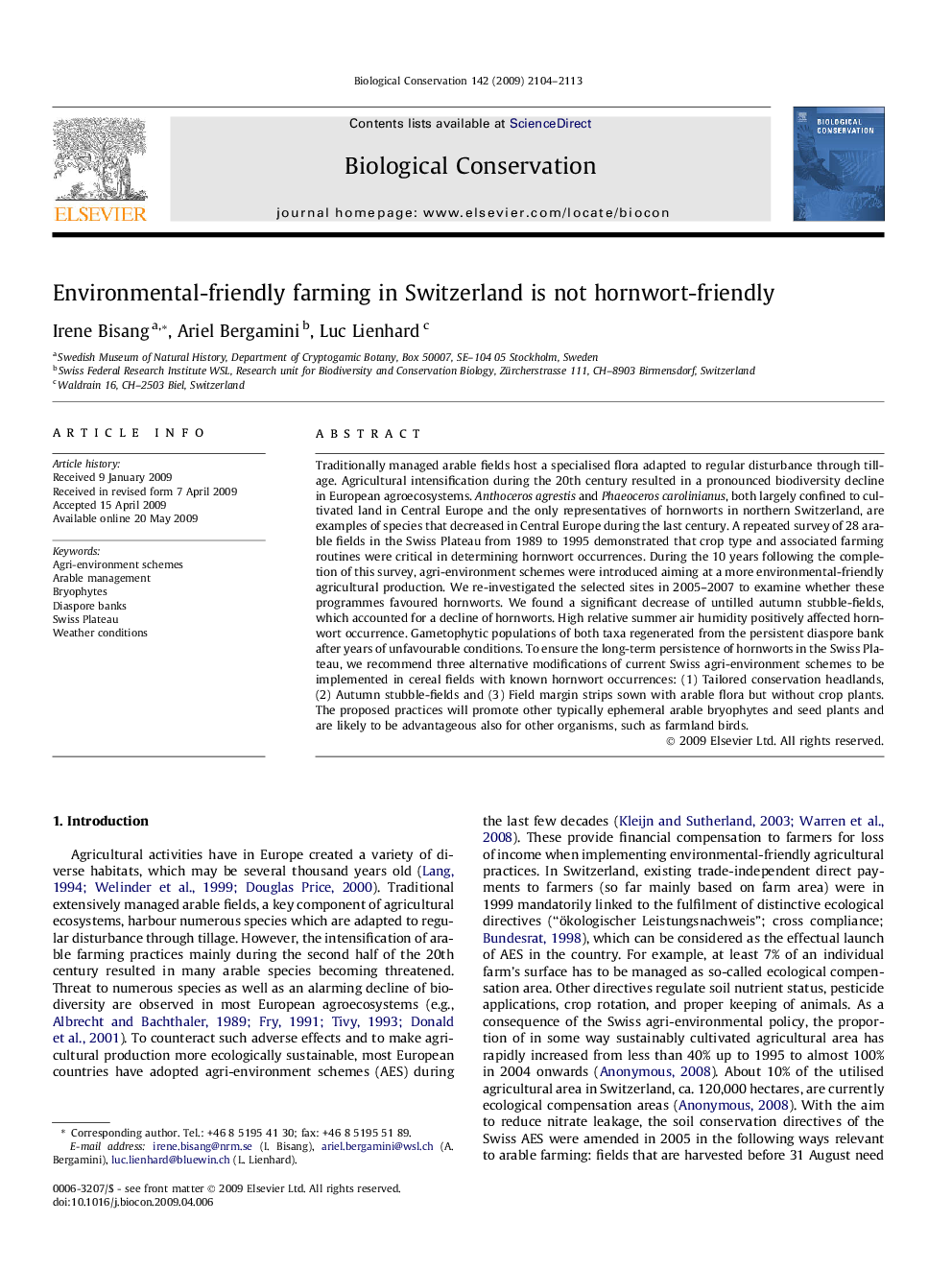| Article ID | Journal | Published Year | Pages | File Type |
|---|---|---|---|---|
| 4386206 | Biological Conservation | 2009 | 10 Pages |
Traditionally managed arable fields host a specialised flora adapted to regular disturbance through tillage. Agricultural intensification during the 20th century resulted in a pronounced biodiversity decline in European agroecosystems. Anthoceros agrestis and Phaeoceros carolinianus, both largely confined to cultivated land in Central Europe and the only representatives of hornworts in northern Switzerland, are examples of species that decreased in Central Europe during the last century. A repeated survey of 28 arable fields in the Swiss Plateau from 1989 to 1995 demonstrated that crop type and associated farming routines were critical in determining hornwort occurrences. During the 10 years following the completion of this survey, agri-environment schemes were introduced aiming at a more environmental-friendly agricultural production. We re-investigated the selected sites in 2005–2007 to examine whether these programmes favoured hornworts. We found a significant decrease of untilled autumn stubble-fields, which accounted for a decline of hornworts. High relative summer air humidity positively affected hornwort occurrence. Gametophytic populations of both taxa regenerated from the persistent diaspore bank after years of unfavourable conditions. To ensure the long-term persistence of hornworts in the Swiss Plateau, we recommend three alternative modifications of current Swiss agri-environment schemes to be implemented in cereal fields with known hornwort occurrences: (1) Tailored conservation headlands, (2) Autumn stubble-fields and (3) Field margin strips sown with arable flora but without crop plants. The proposed practices will promote other typically ephemeral arable bryophytes and seed plants and are likely to be advantageous also for other organisms, such as farmland birds.
